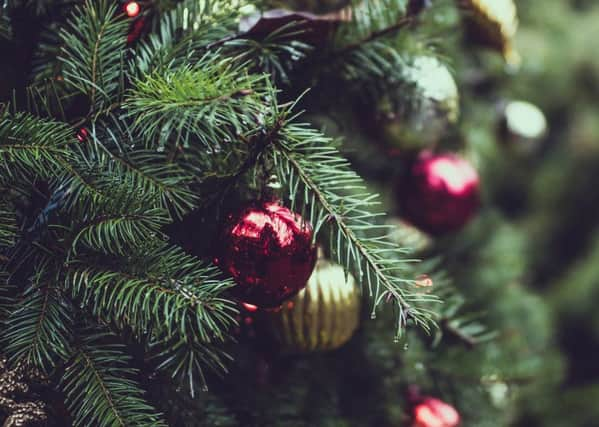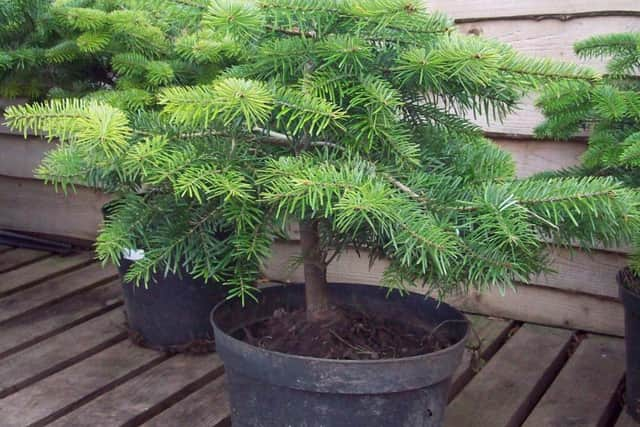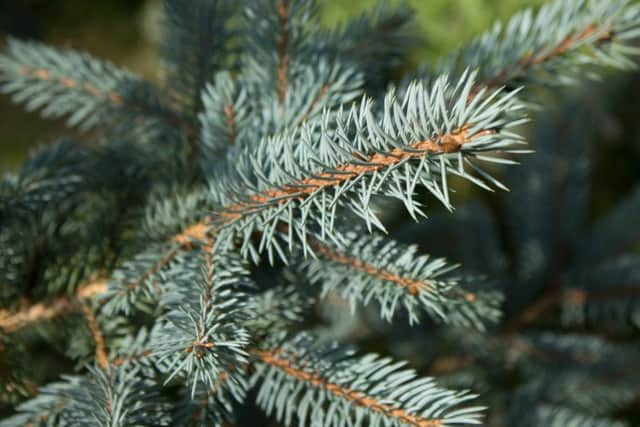Gardening: Taking care of a real tree can see it well beyond Christmas


On the other hand, I think it is one of the integral parts of the festive season, and one of the only incentives I have to clean in the year.
A live tree’s reputation of dropping needles comes from two main sources: the only trees you used to get were Picea abies (Norway spruce), which do drop.


Advertisement
Hide AdAdvertisement
Hide AdThis was made much worse by trees not being watered. Think of a Christmas tree as a huge vase of flowers – you wouldn’t leave that without water, would you?
If you decide on a live cut tree (without roots), the bestselling “non-drop” tree is the Nordmann fir. The blue spruce has an attractive colour, and holds its needles well.
The Douglas fir can cost more than others, while the balsam fir holds its needles even as its branches dry out. The lodgepile pine is a more upright tree for narrower spaces.
When picking a tree, make sure it seems healthy and relatively free of brown needles.


Advertisement
Hide AdAdvertisement
Hide AdCut an inch or so off the bottom of the trunk to ensure the tree will absorb water in its stand. This should be done less than an hour before putting the tree in the stand. Check regularly to make sure the tree has enough water.
Do not put the tree near a window, fireplace, radiator, stove or other source of heat as this will increase the chance of the tree rapidly drying out.
Your other option is a live tree with a rootball. Obviously, because of the weight, you’re going to get a much smaller tree (and they’re expensive), but the advantage is you can plant it outside in the garden when you’re finished.
However, if a live rootball tree is inside for longer than 10 days, it will be less likely to survive once planted. Before bringing it inside, put it in the garage or in the porch for a few days, so it is not as shocked by the temperature difference.


ou’ll want to do the same when bringing it back outside.
Advertisement
Hide AdAdvertisement
Hide AdMy mother did this when I was a child, only to be removed when it outgrew its welcome.
Environmentally-wise, most trees come from Christmas tree farms, not natural forests, and are replaced. Some council offer a recycling scheme.
GET IN TOUCH


l For more information, plus cook what you grow, recipes, environmental news and more, log on to www.mandycanudigit.com (now smartphone friendly), follow me on Twitter @MandyCanUDigIt or you can like me on ny Facebook page at Mandycanudigit
JOBS TO DO THIS WEEKEND
Avoid buying poinsettias that have been accidentally chilled, particularly those sold from street stalls on cold days. Once home, place them in a warm, light place, away from drafts, to ensure they last for as long as possible.
Advertisement
Hide AdAdvertisement
Hide AdIF you’ve already got your Christmas tree up, prevent needle drop by choosing a pine (Pinus) or fir (Abies) tree instead of a Norway spruce (Picea abies). Don’t place the tree near fires or radiators. Cut trees last longer in a stand with a reservoir. Cut off the bottom 5-7.5cm (2-3in) of trunk to allow the tree to drink.
To save holly berries from the birds, for use in Christmas decorations, net a few branches, but leave the rest for the wildlife.
Take hardwood cuttings of ornamental shrubs such as Berberis, Buddleja, Salix, Forsythia, Ligustrum and Rubus. Some deciduous climbers, such as honeysuckle, can also be propagated in this way.
Ornamental grasses and bamboos can be cut back and tidied up.
Advertisement
Hide AdAdvertisement
Hide AdMany clay soils will now be unworkable until spring. Mulching will help to improve and maintain soil structure.
Protect alpines from the wet, if you have not done so already.
Large tubs that are at risk of cracking in the frost should be covered with bubble wrap, hessian or fleece, to insulate them over the winter.
Clean out water butts if not yet done, or install extra ones.
Advertisement
Hide AdAdvertisement
Hide AdLightly prune bush roses now, if not done already, as reducing their height will prevent wind-rock. Roses are generally shallow rooted and can become loose in the soil.
Tree and shrub seeds and berries can still be harvested and sown, once ripe.
Pelargoniums (geraniums) can be cut back, de-leaved, watered less, not fed, and kept relatively dormant and just moist, over the winter. Re-potting, watering and feeding in the spring will bring them back into active growth. They must be kept at about 10°C (50°F) while dormant.